If you enjoy missing your target when shooting beyond CQB distances, then occluded-eye sighting is great.
The Effects of Phoria When Using the ACOG as an Occluded-Eye Gunsight
 Phoria: the visual effect that occurs when one eye is blocked from seeing the same view of a target as the other eye; the blocked eye does not get the same sensory input as the other eye and can begin to wonder off, usually to one side or the other.
Phoria: the visual effect that occurs when one eye is blocked from seeing the same view of a target as the other eye; the blocked eye does not get the same sensory input as the other eye and can begin to wonder off, usually to one side or the other.
In an attempt to make my Trijicon TA-11 ACOG more versatile at engaging close range targets, I installed a Progressive Machine and Tool flip-down front lens cover. With the lens cover in the up position (blocking the view through the scope) the ACOG can function as a non-magnified occluded-eye gunsight; functioning more like a non-magnified red-dot sight, than a magnified scope. However, when the ACOG is functioning as an occluded-eye gunsight, the view of the target for the eye looking into the scope is blocked and the effect of phoria comes into play.
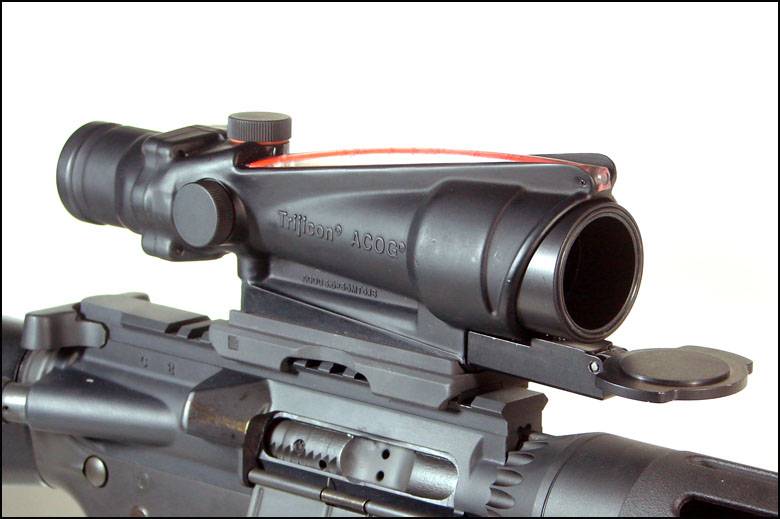
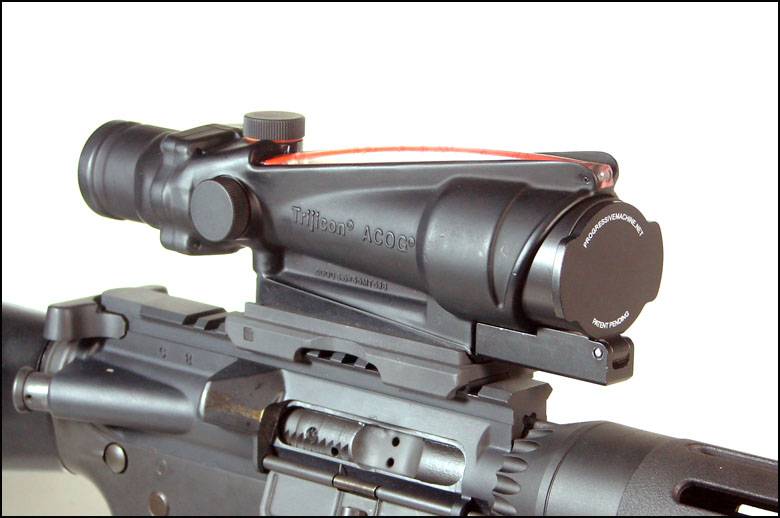
In order to determine just what the effects of phoria would be when using the ACOG TA-11 as an occluded-eye gunsight, I conducted a test comparing the accuracy and points of impact when shooting with the lens cover down (normal sighting) and the lens cover up (occluded-eye sighting.) Testing was conducted at a distance of 25 yards, the farthest distance that I would anticipate using the occluded eye-method of sighting.
Shooting off of sand bags, I zeroed the TA-11 for point of aim equals point of impact at 25 yards using the normal sighting method. I then fired a 10-shot group with the normal sighting method that formed a tidy group with an extreme spread of 0.56”.
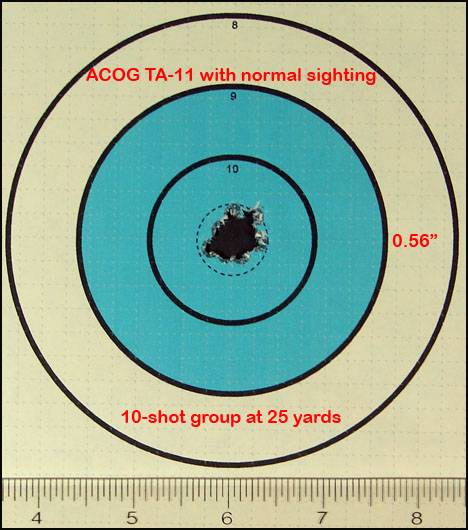
Next, I placed the lens cover in the up position, transforming the ACOG into an occluded-eye gunsight. The left eye views the target, while the right eye views the reticle in the scope. The right eye is blocked (occluded) from seeing the target due to the lens cover. The impact of the initial shots using this method had such a large horizontal deviation to the left that they were off the targets that I originally was using. I had to change to a 24” wide target and aim at the far right side of the target to capture the impact of the rounds. The aiming point for this portion of the test was the numeral “7” on the target.
Using the occluded-eye method of sighting, I fired a 10-shot group. This group had an extreme spread of over 7” and
the center of the group was 14” to the left of the aiming point!
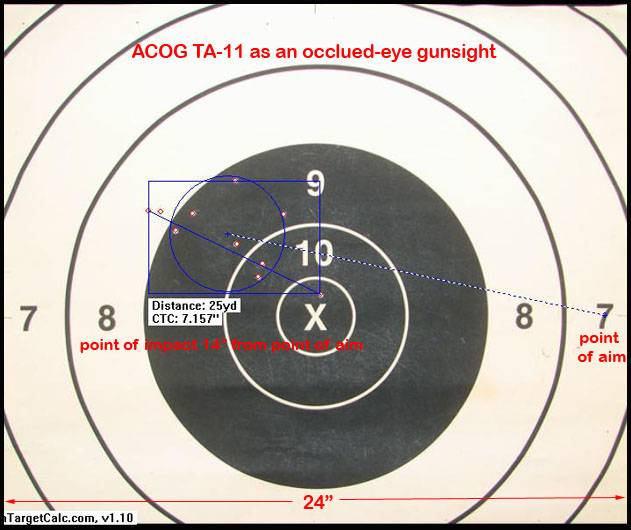
….
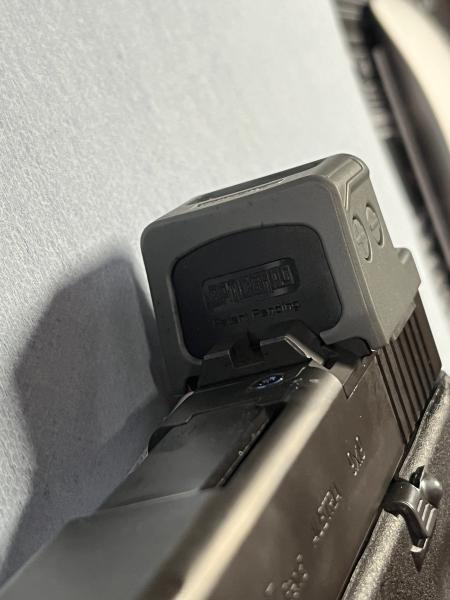



 Reply With Quote
Reply With Quote








